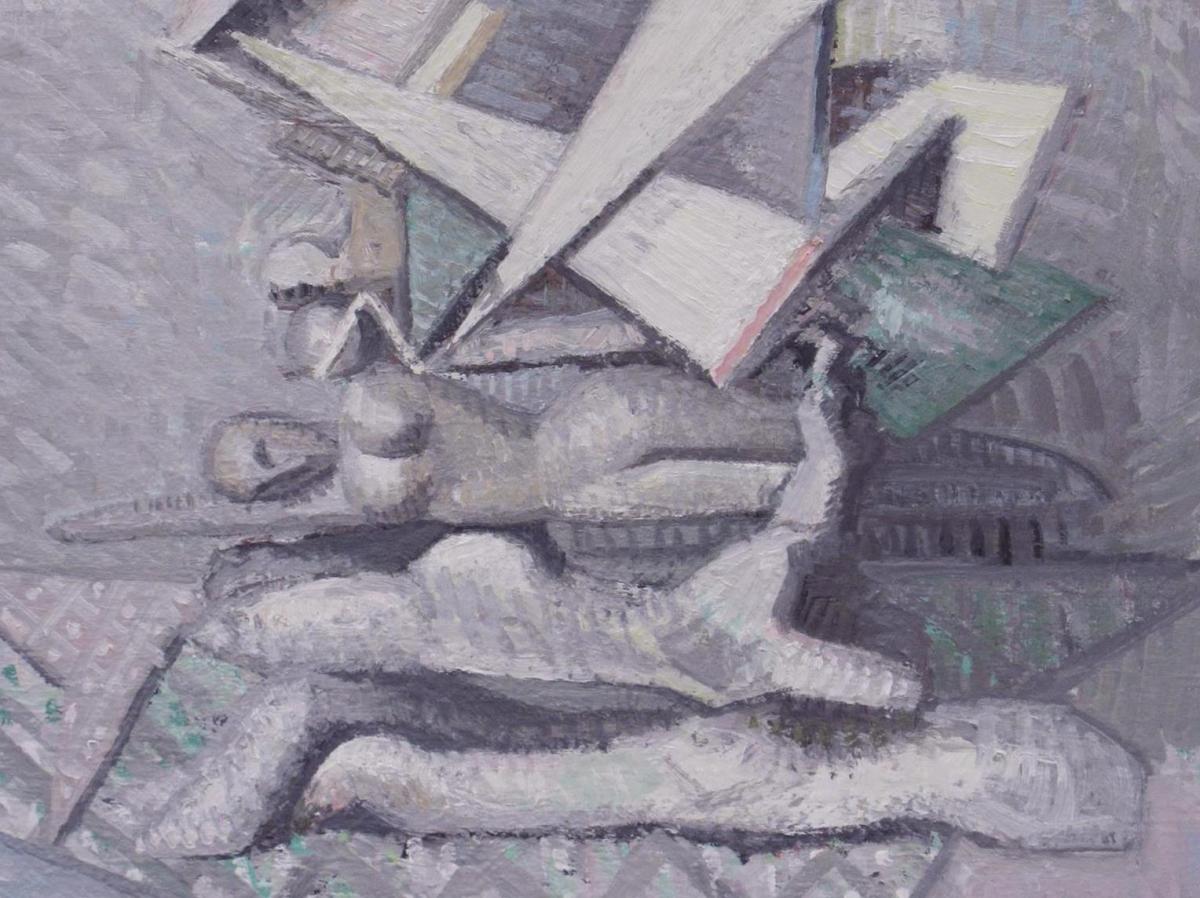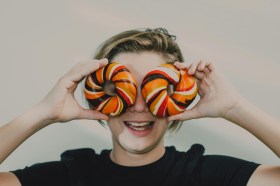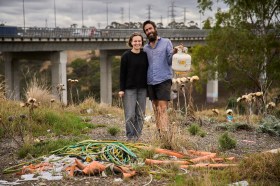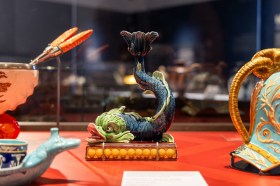Yvette Coppersmith, going backwards to hit a wall of zig-zag static (2014). Image supplied.
In Love and Light, two-time Archibald Prize finalist Yvette Coppersmith turns her attention to the process of creating autobiographical narratives. In a series of 13 canvasses that Coppersmith describes as ‘still life paintings which are self-portraits,’ the artist juxtaposes everyday domestic objects with eight different figurines of a reclining nude.
The twist is that the nude figurines depicted in the paintings are all representations of Coppersmith as constructed by former (male) lovers. The artist invited ex-lovers to create an image of herself as a reclining nude using a packet of DAS modelling clay. Coppersmith subsequently repurposes the models of herself by painting them into the exhibited works alongside a selection of objects from her home studio.
In the aesthetic vernacular of the portraitist, lovers are frequently muses. Under Coppersmith’s authority, however, the muse becomes the artist and the artist becomes the muse, until she creatively repossesses the figures of herself to become her own muse.
Throughout art history, the female muse has functioned to establish the male artist’s professional and sexual virility. ‘For me there are only two kinds of women: goddesses and doormats’, said Pablo Picasso. In Love and Light, Coppersmith swerves the dominant historical paradigm to occupy the space of the phallic artist, thereby objectifying and appropriating the male gaze to challenge embedded notions of femininity, sexuality and avant-garde creative production. In the process, the lover’s sculptural distortions of the figure and Coppersmith’s reimaging of the figurine on canvas, also function to write back to Cubist conventions. This highly absorbing work reveals hazardous and unexpected repercussions to such an enterprise.
The luminous white-grey canvasses quietly occupy the vault-like backroom of the Utopian Slumps gallery. Compared to previous shows in which Coppersmith commands a full, bold palate, Love and Light first appears muted and restrained. This is not quite the case, however. Almost as if the work has been treated to a private rain shower, pastel pinks, blues, mauves and greens belatedly body forth from the canvasses to claim full ownership of the space.
There is a palimpsestuous effect to the works, some of which have been painted and repainted up to ten times. Analogous to the layered process of communication and collaboration with the artist’s former lovers, the paintings bring a sense of movement to the Giorgio Morandi-inspired still-life. Snowy dots, textured but refined brush strokes and diamond patterning reinforce this effect of animation.
In the centre of the gallery, a compact, studio-style installation table holds the collection of nude figurines of Coppersmith. By contrast, the painting’s domestic objects are distributed around the base of the table, creating an implicit hierarchy between the crafted memories of lovers and the intertextual objects of the artist’s life. The predominantly white objects include Coppersmith’s signature glass water bottle and pink straw; ceramic jugs and vases; a small pastel-daubed papier-mâché donkey that the artist made in high school; and a boutique Anastasia Klose shopping bag from the NGV Melbourne Now exhibition. This memorabilia symbolises the fabric of the artist’s autobiographical project.
The assemblage of the paintings’ source materials enables the spectator to examine each of the contributions of former lovers in closer detail, alongside the other objects Coppersmith considers significant to include in the work. In scrutinising these curios, the spectator makes calculations about the number of lovers represented, the scenes of intimacy connoted, the nature of the affairs, their effects and outcomes. Seemingly bypassing internal censors, we become embroiled in a system of ordering and arranging information about the female artist’s private life, all of which expose our own presuppositions about gender, sexuality and appropriate behaviour. The process of reading these works suggests that the spectator has a constitutive role in the autobiographical project, despite the seeming paradox.
Like the emphasis on the spectator’s role, the male gaze seems proliferated, rather than reduced, in this project. One former lover rejects the DAS modelling clay, instead opting to create an impressive architectural form out of balsa wood, which is also partly painted. The biographical structure might be a special homage to the artist or a playful gesture that suggests that the lover would have made a dynamic and productive contribution in a relationship. Or it might be an arrogant derailing or appropriation of the project that Coppersmith set out to achieve.
In arcade plate = opaline (2014), Coppersmith paints the balsa wood figurine on a platform supported by two upturned ceramic vessels. Her celebratory re-presentation of the sculpture suggests a sympathy between the male gaze and the artist’s self-representation. Another lover rejects the figurative nature of the commission and presents the nude as clay smearings on a squarish flat board. This dismembering seems angry: a reflection of past misunderstandings and the impossibility of resolution. See common structure, smoothie (2014) for Coppersmith’s response. In her Dadaist titlings, however, Coppersmith prizes irony and process over attributions of inner angst.
Psychoanalysis suggests that honest self-representation is unlikely because our true motivations are unknown to us or thwarted in the representational process. In Love and Light, Coppersmith tropes the resulting process of substitution and transference that underwrites all identity formations. By conducting a sequence of switches between lover and muse, muse and artist, male and female – so that the female artist ultimately becomes her own muse – Coppersmith recreates herself in the face of desire and loss. The canvas entitled going backwards to hit a wall of zig-zag static (2014) brings all the figurines together in a comic bow to the work of the psyche. While we may aspire to gain leverage over our past experiences, the best solution may be to acknowledge what we’re all stacked up against.
Rating: 4 stars out of 5Love and Light
By Yvette Coppersmith
Utopian Slumps, Guildford Lane, Melbourne
www.utopianslumps.com
15 March – 5 April





